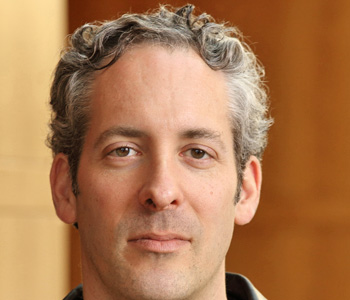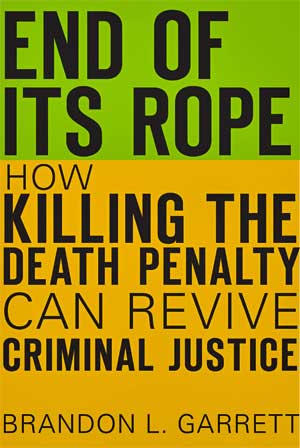
End of its Rope explores why the death penalty in America unexpectedly faded away.
Twenty years ago, death sentencing was at its modern height. Across the Southern “death belt,” death sentences and executions were common. The death penalty was popular, as opinion polls showed, and politicians understood well.
Suddenly, this cycle of punishment began to slow down. The story of this great decline of death penalties in America teaches important lessons for all involved in the effort to reduce mass incarceration.
In 2016, just thirty-one people were sentenced to death in the entire country. If you look back at the mid-1990s, by way of contrast, several hundred people were sentenced to death in as many as two hundred counties per year. Executions are fading fast too. Only twenty people were executed in 2016.
In this book, I explain what changed. I draw on death penalty trials across the country, from high-profile cases like the Aurora, Colorado theater shooting trial, to small-town trials in Virginia and North Carolina that only made local news.
Increasingly, juries are rejecting the death penalty, even in cases of serious murders. Increasingly, they are hearing mental health evidence and background evidence that causes them to vote for mercy for convicted murderers. Those decisions have changed the shape of the American death penalty and represent a sea change in our attitudes towards criminal punishment.
In my first job as a lawyer, I represented several people who had spent years behind bars but were exonerated by DNA tests, including people who had falsely confessed, like the Central Park Five. As a law professor, I began to study the cases of DNA exonerees and I read the criminal trials of people who were sentenced to death despite their innocence. In this book, I describe the cases of those death row DNA exonerees.
But I discovered that the innocence revolution does not do a good job of explaining the decline in death sentencing in this country. In fact, the states that sentence the most people to death have the most exonerations from death row. Innocence is an inevitable byproduct of death sentences, which is incredibly disturbing, but it does not explain why starting in 1999, death sentences began to decline.
I have spent the past several years collecting by hand the names and counties of people sentenced to death in the United States. There was no list and no authoritative source for that information. Like with so much in criminal justice, we did not have good data. After collecting information about these thousands of cases, I along with colleagues, analyzed the data.
One explanation for the death penalty decline is the decline in murders. Murders steadily declined beginning in the mid-1990s. Fewer murders meant fewer death sentences. However, murders also declined in states and counties that do not death sentence at all. And out of the ten thousand plus murders each year, a tiny proportion result in death sentences, the bulk of which never result in an execution.
We also found a troubling racially biased explanation for the death penalty decline. Not all lives matter the same. Counties with more white victims of murder had more death sentences. Counties with larger black populations in general had many more death sentences.
We also found a “muscle memory” effect. Counties that get death sentences keep on getting more of them on average. Prosecutors may put together a crack team of capital prosecutors, chalk up some victories, and then they aggressively pursue the death penalty even while neighboring counties do not.
But something broke that cycle. One change has made an impact: the quality of defense lawyering. States that have statewide offices to represent people at capital trials experienced far greater declines in death sentencing.
Cost is clearly also a factor. States have spent hundreds of millions of dollars, even billions, on death sentencing, even though very few people sentenced to death are ever executed. The cost of these trials, particularly once prosecutors started failing to get death sentences, clearly has had an impact. When you look at the death sentencing maps that I created, you see that rural counties disappear entirely by the end of the 1990s. They stop death sentencing.
Turn to page 17 and read the story of two young brothers, Henry McCollum and Leon Brown, who were convicted and sentenced to death in North Carolina in 1984. They would serve decades in prison before DNA tests proved their innocence. Due to the brutality of the murder that they were convicted of, their case was held out as a poster-child for why the death penalty was needed. Now their case symbolizes everything that goes wrong with our death penalty: flimsy evidence, coerced confessions, botched forensics, an overreaching prosecutor, pointless appeals, and slow justice. Their tragic story is unforgettable. But cases like theirs explain why the death penalty is now at the end of its rope.
You can also turn to page 59 and compare a more recent North Carolina death penalty trial, from 2010. There the jury heard the case of a man charged with five homicides at the same time, more than any other person in the state’s history. The jury heard substantial evidence about the defendant’s “sadistic and ritualized” abuse throughout his childhood. The jury chose a life sentence.
And turn to page 5 to look at an image displaying the decline in death sentences in America. You will see how from several hundred death sentences a year in the 1990s, we now have just a few dozen per year. Death sentences have come crashing down.
We are all in it together, when we impose punishment on criminals. Our justice system affects our entire society, for good and ill. When innocent people are sent to death row, that injustice implicates us all. When a person is punished despite manifest mental illness; when a person gets a severe sentence because the lawyer appointed by the judge was incompetent; that is on us, too.
All of those problems that have plagued American criminal justice––flawed evidence, shoddy lawyering, neglect of mental health issues, prosecution overreaching––are all magnified in death penalty cases. Yet, despite those persistent problems, we have all but ended the American death penalty. Hard working lawyers learned how to make the case for mercy to jurors. As crime fell, attitudes towards severe punishment changed. Prosecutors relaxed their punitive muscles and realized that death sentences are costly, rarely result in executions, and are biased.
Although some politicians are trying to pound the tough-on-crime drums again, the death penalty decline shows how costly and pointless over-punishment can be. It mostly affects racial minorities and those who cannot afford Dream Team lawyers. The American death penalty decline points the way to a sane criminal justice system––one that treats the mentally ill, respects victims, avoids targeting the innocent, provides decent lawyers, and imposes punishment carefully and fairly.


Brandon L. Garrett is the Justice Thurgood Marshall Distinguished Professor of Law and White Burkett Miller Professor of Law and Public Affairs at the University of Virginia School of Law. His research and teaching interests include constitutional law, civil rights, criminal law and procedure, and habeas corpus. Garrett’s work, which includes several books and numerous articles, has been widely cited by courts, including the U.S. Supreme Court, lower federal courts, state supreme courts, and courts in other countries.